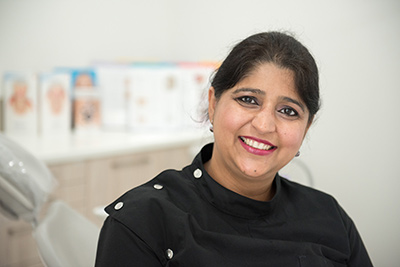Cavity Treatment Without Anaesthesia
No one likes to have a cavity, especially in their childhood. Unfortunately, many of these early cavities go undiagnosed and untreated. In fact, 23% of children within the same age group have untreated cavities, leading to even more discomfort and decay.
Since children are not familiar with the signs of a dental cavity, many parents overlook them. Instead of complaining about a sore tooth, the kids might suddenly develop an aversion to eating, drinking, or speaking properly. They usually get traumatised knowing that for getting the treatment of their sore teeth, they have to sit in the dental chair for hours of drilling, having enormous pain.
Introducing the Hall Technique
Tooth decay is the number one chronic childhood illness. More advanced technology is being used by the kids dentist to understand tooth decay. New treatments have been investigated and developed which don’t need injections or drilling. One of these treatments is known as the Hall technique, which involves placing a small stainless steel crown over affected teeth to seal the decay with very little preparation (drilling, etc.) of the tooth. The hall technique is a great option for those children who have a larger cavity that requires a crown but would not tolerate treatment with local anaesthetics.
How does the Hall technique get around some of these problems?
Fitting the crown with the Hall technique is a quick and painless procedure. There is no need to remove caries or prepare the tooth in any way before placing the crown, and no local anaesthetic is required. Depending on the location of the tooth, there are different types of crowns that are used. In the majority of cases, especially involving back teeth, stainless steel crowns are used.

On comparing sealing decay under these small metal caps with traditional tooth fillings, the Hall technique has higher success rates, with 93% of children avoiding toothache or infection for two to five years. Children prefer this technique and find it as easy to deal with as traditional drilling and filling, regardless of whether the treatment is provided in a dental clinic or a classroom.
More Efficient and Less Expensive Treatment
The Hall Technique was first tested in the field in Sudan. Modern dentistry is frequently lacking in low-income countries. So a tooth decay treatment that was simple, quick, and non-invasive was welcomed.
Over the course of two years, 164 children between the ages of 5 and 8 were enrolled in a randomised controlled experiment.
To say the least, the outcomes were incredible.
The Hall Technique was a third less expensive than typical treatment and took approximately eight minutes rather than 45 minutes to finish. There were also other benefits:
- After two years, there is a 97% success rate.
- There is no need for anaesthetic or drilling.
- Tooth structure was not weakened.
- Errors and mistakes are reduced.
- Patient satisfaction has improved.
While there are drawbacks of both fillings and crowns, their benefits in the right situations make crowns the first choice to treat dental decay in children.
Preventing tooth decay in children and its consequences will reduce its negative effect on children’s health, wellbeing and attainment. Therefore, good tooth brushing habits and healthy diets must be adopted and encouraged at home for good healthy teeth.
Rouse Hill Smiles Dental Care tries to provide you with the best dental solutions possible. We provide cheap services such as emergency dental care and late-night help for your convenience.
Visit our website for more information on our numerous services, or come in for a consultation because we feel you deserve a healthier, more confident smile.
Since children are not familiar with the signs of a dental cavity, many parents overlook them. Instead of complaining about a sore tooth, the kids might suddenly develop an aversion to eating, drinking, or speaking properly. They usually get traumatized knowing that for getting the treatment of their sore teeth, they have to sit in the dental chair for hours of drilling, having enormous pain.
Tooth decay is number one chronic childhood illness. More advanced technology is being used by the kids dentist to understand tooth decay. New treatments have been investigated and developed which don’t need injections or drilling. One of these treatments is known as the Hall technique, which involves placing a small stainless steel crown over affected teeth to seal the decay with very little preparation (drilling, etc.) of the tooth. The hall technique is a great option for those children who have a larger cavity that requires a crown but would not tolerate treatment with local anesthetics.
These crowns are quick to place and done in a single visit. Depending on the location of the tooth, there are different types of crowns that are used. In the majority of cases, especially involving back teeth, stainless steel crowns are used.
On comparing sealing decay under these small metal caps with traditional tooth fillings, the Hall technique has higher success rates, with 93% of children avoiding toothache or infection for two to five years. Children prefer this technique and find it as easy to deal with as traditional drilling and filling, regardless of whether the treatment is provided in a dental clinic or a classroom.
While there are drawbacks of both fillings and crowns, their benefits in the right situations make them a first choice to treat dental decay in children.
Preventing tooth decay in children and its consequences will reduce its negative effect on children’s health, wellbeing and attainment. Therefore, good tooth brushing habits and healthy diets must be adopted and encouraged at home, for good healthy teeth.
Our Principal Dentist
Dr Teena and the Rouse Hill Smiles team are dedicated to providing patients of all ages with the highest quality of care.

Dr Teena Bali
Dentist
Quick Contacts
- Rouse Hill Plaza G07-G08, 2-4 Aberdour Avenue Rouse Hill, NSW 2155
- enquiries@rousehillsmilesdentalcare.com.au
- (02) 8320 0548







